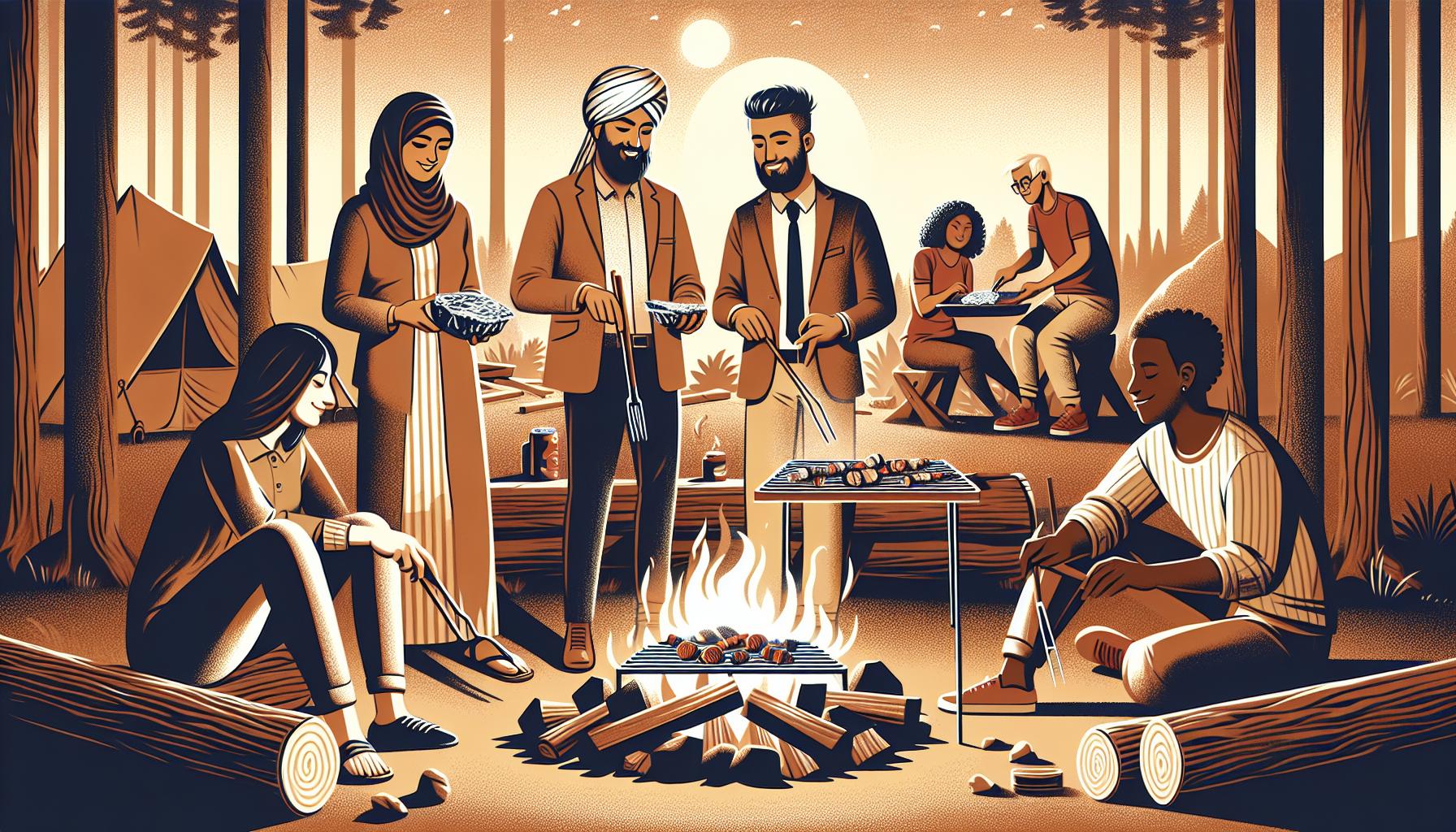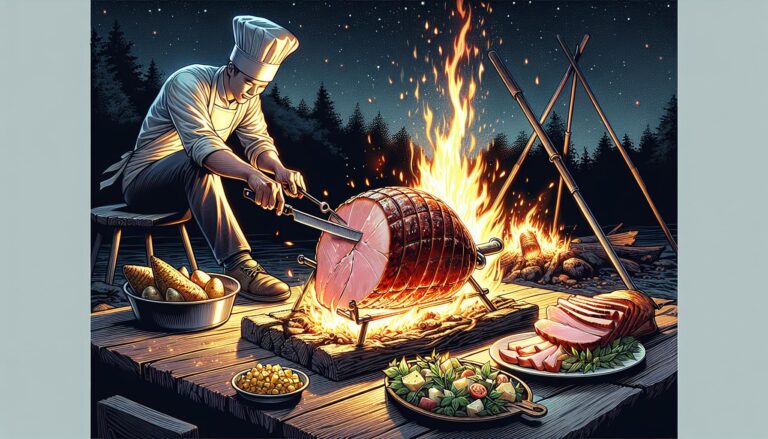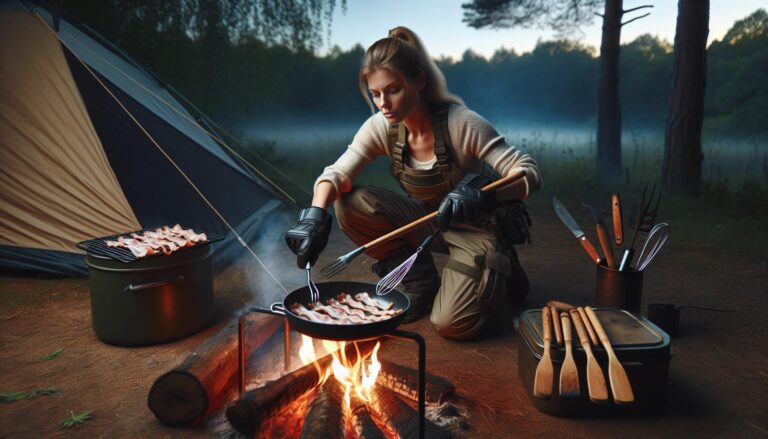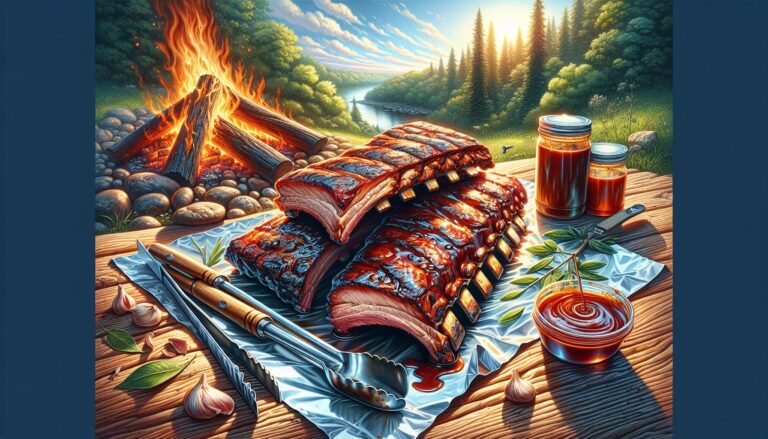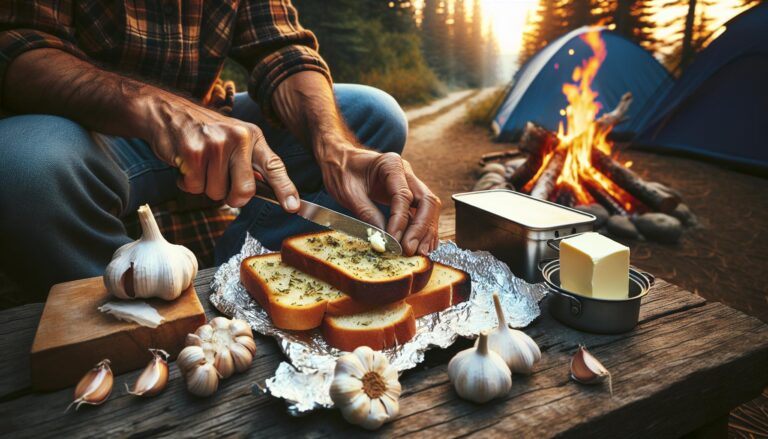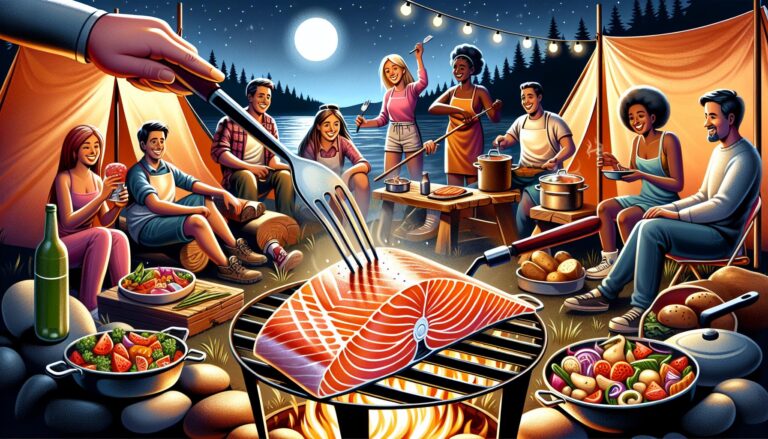Campfire Cooking 101: Easy & Tasty Methods
Cooking on a campfire is an art that turns a simple meal into a memorable experience. You’re out in the wild, the stars are your canopy, and the crackling fire is your stove. It’s rustic, it’s fun, and with the right tips, it’s easier than you might think.
Whether you’re a seasoned camper or a beginner, mastering campfire cooking can elevate your outdoor adventures. From selecting the right wood to perfecting your timing, you’ll be dishing out delicious meals that’ll have everyone asking for seconds.
Preparing for Cooking on a Campfire
When you’re ready to master campfire cooking, preparation is key. Your efforts begin long before the first match is lit or the first skillet is warmed. Getting ready involves sourcing materials, building the right structure, and selecting the best tools for the job.
Gathering Firewood
Hardwoods such as oak, hickory, and maple are your best bets for a long-lasting, hot campfire. Here’s what you need to know about gathering firewood:
- Always use seasoned wood; it burns hotter and cleaner.
- Avoid wood that’s wet or rotted—it won’t burn as efficiently.
- Check local guidelines for firewood collection or purchase it from nearby vendors.
Building a Fire Pit
A fire pit is essential for safety and for controlling your cooking fire. Here’s how to set one up:
- Clear a space free of flammable materials like leaves or grass.
- Encircle the area with non-flammable materials such as rocks or a metal ring.
- Ensure the pit is a safe distance from tents, trees, and any gear.
Choosing the Right Cookware
The cookware you choose directly affects your meals’ outcome. Keep these things in mind:
- Cast iron skillets distribute heat evenly, perfect for cooking meats.
- Aluminum cookware is lightweight, but be wary of cooking acidic foods that might cause corrosion.
- Long-handled utensils will keep you safely away from the flames.
Selecting the appropriate cookware and utensils isn’t just about convenience; it’s about your safety and the quality of your campfire meals. So before you start your culinary adventure, make sure you’re fully prepared with the right materials.
Lighting the Campfire

Proper lighting techniques can turn your campfire cooking experience from average to extraordinary. The key to a successful campfire is not just in the preparation; it’s also in how you ignite and maintain the fire.
Choosing the Right Firewood
To ensure your fire burns effectively, you must select the appropriate firewood. Hardwoods like oak and hickory are excellent for cooking because they burn hot and slow, providing a consistent cooking temperature. Softwoods, on the other hand, tend to burn fast with less heat, making them less ideal for a cooking fire. Make sure the wood you choose is dry and seasoned; damp wood will not only be difficult to light, but it’ll also create excessive smoke and potentially spoil your food.
- Hardwoods: Ideal for cooking
- Softwoods: Not recommended
- Dry and seasoned: Essential for a good fire
Always check local guidelines about which types of wood you’re allowed to gather or use at your particular campsite to protect the environment and adhere to regulations.
Starting the Fire
Before striking a match, build a foundation using a small pile of tinder like dry leaves, pine needles, or paper. Building on that foundation, add kindling in a teepee shape around your tinder. The structure allows for necessary airflow that will help the fire catch.
Once your base is ready, it’s time to light your tinder. As it catches fire, gently blow at the base to provide additional oxygen, which will help the flame grow. Add more kindling as the fire strengthens, followed by your firewood—starting with the smallest pieces and gradually working up to the larger logs.
Controlling the Flames
Once you’ve got a steady fire going, managing it becomes your next task. If the flames are too high, they could burn your food or pose a safety hazard. Control the size and intensity of your fire by carefully adding more wood to keep it going or spreading out the logs to reduce its power. Keep water or dirt nearby to douse any errant flames should they become unruly.
Remember that the ideal cooking fire has glowing coals more than high flames, as they provide a more even heat distribution. To achieve this, let your firewood burn down sufficiently before you begin cooking, which can take some time. Patience is key in preparing the perfect bed of coals for your campfire culinary creations.
- Add wood for increased heat
- Spread logs to decrease heat
- Monitor coals for consistent cooking temperature
Cooking Methods on a Campfire
Once you’ve got the perfect bed of coals ready, it’s time to get cooking. There are several campfire cooking methods, each with its charm and flavor it gives to the food. Here’s a breakdown of some of the most popular techniques.
Grilling
Grilling is one of the simplest and most satisfying ways to cook over an open fire. All you need is a campfire grate to place over the coals. Here’s how you do it:
- Ensure your grill grate is clean and position it about six inches above the glowing coals.
- Let the grate heat up for a few minutes before you start cooking.
- Season your meat, vegetables, or fish, then place them directly on the grate.
- Turn the food occasionally to ensure it cooks evenly.
The high heat from the coals will give your food a mouth-watering sear and a smoky flavor that’s hard to replicate with any other cooking method.
Foil Packet Cooking
Foil packet cooking, also known as “hobo dinners,” is a mess-free way to cook. It’s simple: wrap your ingredients in a heavy-duty aluminum foil and let the fire do the work. Here’s the process:
- Cut a large enough piece of foil to fully enclose your meal.
- Place your ingredients in the center, adding seasonings, sauces, or a pat of butter for extra flavor.
- Fold the foil over the ingredients and seal the edges tightly to create a packet.
- Place the packet on the coals, turning half-way through cooking, usually about 10-20 minutes depending on the meal.
The foil traps the heat and steam, cooking your food evenly and keeping all those juicy flavors locked in.
Skewer Cooking
Skewers are the embodiment of classic campfire cooking. Meat, vegetables, or marshmallows get a delightful char when cooked over an open flame. Here’s what you’ll need to do:
- Soak wooden skewers in water for about 30 minutes before use to prevent burning.
- Thread your chosen food items onto skewers, leaving a small space between each one to ensure they cook through.
- Hold the skewers over the coals or place them on a grate if you have one.
- Rotate the skewers often for an even cook.
With skewer cooking, you’re in total control, able to gauge cooking progress easily, ensuring each morsel is just right. Whether you’re going for a savory kebab or a sweet, sticky s’more, skewer cooking brings fun to the campfire culinary experience.
Campfire Recipes
When you’re out in the wild, surrounded by the rustic charm of nature, food doesn’t just fill your stomach—it becomes an integral part of the camping experience. With your perfect bed of coals ready, it’s time to delve into some mouthwatering campfire recipes. These dishes are not just easy to prepare but are also designed to satisfy your hunger after a busy day of outdoor adventures.
Campfire Chili
Imagine a warm, hearty bowl of chili under the starlit sky. Campfire Chili is a classic camp favorite that’s both filling and easy to make. Start with a heavy-duty pot over the campfire, and brown some ground beef or turkey. Once it’s cooked, drain the excess fat and add onions and garlic, cooking until they’re soft. Then, toss in a blend of tomatoes, beans, chili powder, cumin, and salt. Let it simmer over the fire for an hour, stirring occasionally to prevent sticking. The longer it cooks, the more the flavors meld together, giving you a deliciously rich and satisfying meal. For added convenience, prep the ingredients beforehand and store them in resealable bags.
Foil Packet Tacos
Foil Packet Tacos offer a fun twist to your campfire cuisine. They’re perfect for those who want a no-muss, no-fuss approach to mealtime. Begin by laying out large sheets of aluminum foil, then in the center, place your choice of seasoned meat—think chicken strips, ground beef, or even shrimp. Load up the foil with diced peppers, onions, and a sprinkle of cheese. Fold the foil into sealed packets and place them over the coals, flipping once, until the meat is cooked through. The steam inside the packet turns these ingredients into soft taco fillings, exploding with flavor. Once done, carefully open the packets—watch out for hot steam—and scoop your tasty taco mixture into tortillas.
Grilled Vegetables
For a side or a vegetarian main course, Grilled Vegetables are a fantastic option that pair well with any meal. Pick a variety of vegetables like bell peppers, zucchini, mushrooms, and onions. Cut them into large chunks or slices that won’t fall through the grill grate. A simple drizzle of olive oil, a sprinkle of salt, pepper, and your favorite herbs is all you need for seasoning. Skewering the veggies or using a grill basket can make cooking and flipping easier. Grill them over the campfire until they’re charred to your liking, turning occasionally for an even cook. The smoky flavor imparted by the flames will make these grilled veggies an irresistible addition to your campfire feast.
Armed with these recipes, you’re all set to whip up some delicious meals that’ll keep your campfire gathering well-fed and content. Don’t forget to practice safe cooking and fire management throughout your culinary endeavors in the great outdoors. Enjoy the unique atmosphere of cooking over a campfire and the delectable foods that come from it.
Campfire Safety
Ensuring safety is key when it comes to cooking over an open flame. Let’s look at the essential measures you should take to keep your campfire cooking experience enjoyable and secure.
Clearing the Area
Before you even strike a match to start your fire, you’ll want to make sure the surrounding area is cleared and safe. Here’s what to keep in mind:
- Choose a spot that’s at least 10 feet away from tents, trees, and other flammable objects.
- Look up; ensure no overhanging branches could ignite from rising heat.
- Create a firebreak by digging a small trench around your campfire site to prevent the spread of flames.
- Keep a bucket of water or sand nearby in case of emergencies.
Preparing the area not only prevents unwanted fires but also ensures that you’ve got a controlled space to cook and relax in.
Extinguishing the Fire Properly
One of the most critical aspects of campfire safety is knowing how to put out the fire properly once you’re done cooking. Here’s what to do:
- Drown the fire with water, making sure all embers, not just the red ones, are wet.
- Stir the ashes to reveal any remaining hot spots and douse them with more water.
- Check that everything is cool to the touch. If it’s too hot to touch, it’s too hot to leave.
Never leave your campsite without ensuring that the fire is completely extinguished. An improperly doused campfire can reignite and cause a wildfire.
Food Handling and Hygiene
Your food’s safety is as pivotal as the safety of the campfire itself. To maintain hygiene and prevent foodborne illnesses, follow these guidelines:
- Keep raw and cooked foods separate to avoid cross-contamination.
- Use a food thermometer to ensure food is cooked to the correct temperature.
- Wash your hands frequently with soap and water, especially after handling raw meat.
- Store perishable items in a cooler with ice to keep them at safe temperatures.
By following these simple yet effective methods, you can ensure that the food you cook over your campfire is not only tasty but also safe to eat. Remember, good food handling habits are just as necessary outdoors as they are in your kitchen at home.
Conclusion
Mastering the art of campfire cooking can elevate your outdoor adventures to new heights. Armed with the knowledge of how to light a fire properly, select the best wood, and manage the flames, you’re now ready to tackle any recipe. Whether it’s the smoky allure of grilled vegetables, the hearty satisfaction of campfire chili, or the playful simplicity of foil packet tacos, you’ve got the techniques to ensure a delicious outcome. Remember to always prioritize safety and leave no trace to preserve the beauty of the natural environment. Now go ahead and gather your friends and family around the warm glow of your campfire and create memories that will last a lifetime. Happy cooking!
Frequently Asked Questions
What’s the best type of firewood for campfire cooking?
Hardwoods like oak and hickory are best for campfire cooking due to their long-lasting burn and even heat distribution.
How do I start a campfire for cooking?
Begin with a foundation of tinder and kindling, then gradually add larger pieces of firewood. Light the tinder and allow the fire to grow naturally.
What are some common campfire cooking methods?
Common methods include grilling directly over the flames, foil packet cooking, and skewer cooking over the hot coals.
Can you suggest any simple campfire recipes?
Yes, some simple campfire recipes include Campfire Chili, Foil Packet Tacos, and Grilled Vegetables, each offering a unique and flavorful outdoor dining experience.
How do I manage the fire while cooking?
To manage the fire, control the size and intensity of the flames to create a bed of glowing coals, which provides even heat for cooking.
What safety tips should I follow when campfire cooking?
Always clear the area of flammable materials, never leave the fire unattended, extinguish the fire properly, and practice good food handling and hygiene.
